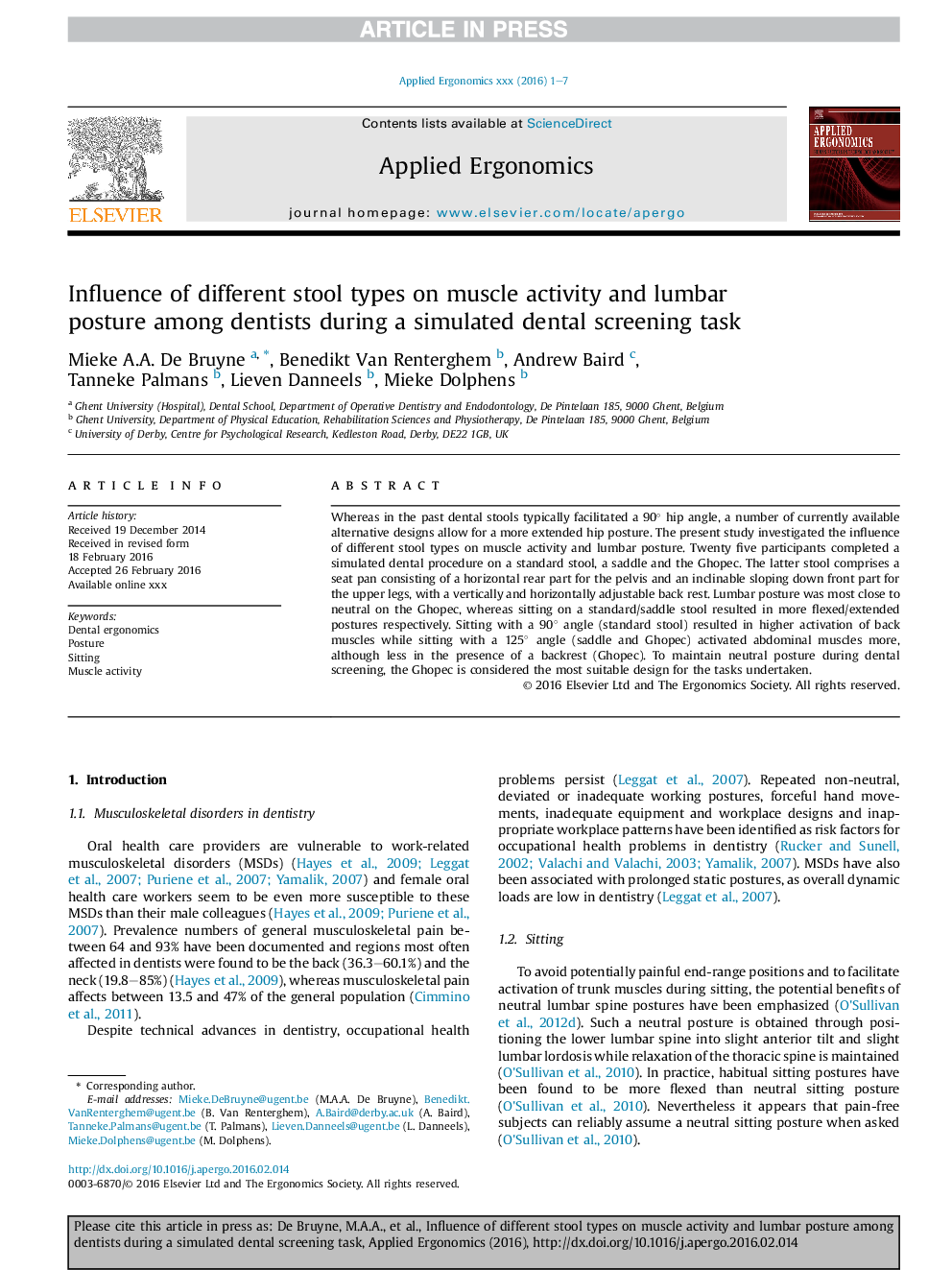| Article ID | Journal | Published Year | Pages | File Type |
|---|---|---|---|---|
| 6947828 | Applied Ergonomics | 2016 | 7 Pages |
Abstract
Whereas in the past dental stools typically facilitated a 90° hip angle, a number of currently available alternative designs allow for a more extended hip posture. The present study investigated the influence of different stool types on muscle activity and lumbar posture. Twenty five participants completed a simulated dental procedure on a standard stool, a saddle and the Ghopec. The latter stool comprises a seat pan consisting of a horizontal rear part for the pelvis and an inclinable sloping down front part for the upper legs, with a vertically and horizontally adjustable back rest. Lumbar posture was most close to neutral on the Ghopec, whereas sitting on a standard/saddle stool resulted in more flexed/extended postures respectively. Sitting with a 90° angle (standard stool) resulted in higher activation of back muscles while sitting with a 125° angle (saddle and Ghopec) activated abdominal muscles more, although less in the presence of a backrest (Ghopec). To maintain neutral posture during dental screening, the Ghopec is considered the most suitable design for the tasks undertaken.
Keywords
Related Topics
Physical Sciences and Engineering
Computer Science
Human-Computer Interaction
Authors
Mieke A.A. De Bruyne, Benedikt Van Renterghem, Andrew Baird, Tanneke Palmans, Lieven Danneels, Mieke Dolphens,
